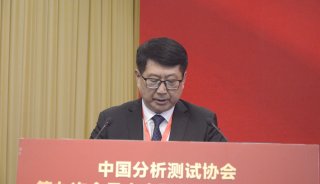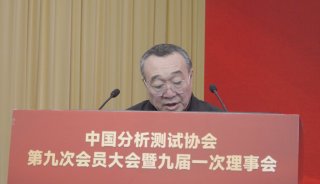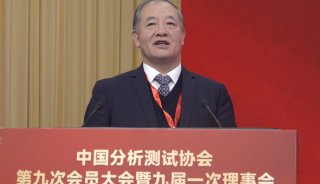Basics of Electrochemical Impedance Spectroscopy(九)
Multiple Models
The impedance spectrum in Figure 25 shows two clearly defined time constants.
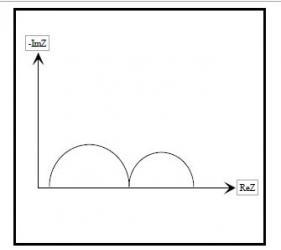
Figure 25. Two Time Constant Spectrum
This spectrum can be modeled by any of the equivalent circuits shown in Figure 26.
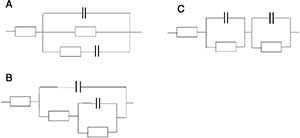
Figure 26. Equivalent Circuit Models with Two Time Constants
As you can see, there is not a unique equivalent circuit that describes the spectrum. Therefore, you can not assume that an equivalent circuit that produces a good fit to a data set represents an accurate physical model of the cell.
Even physical models are suspect in this regard. Whenever possible, the physical model should be verified before it is used. One way to verify the model is to alter a single cell component (for example increase a paint layer thickness) and see if you get the expected changes in the impedance spectrum.
Empirical models should be treated with even more caution. You can always get a good looking fit by adding additional circuit elements to a model. Unfortunately, these elements may have little relevance to the cell processes that you are trying to study. Empirical models should therefore use the fewest elements possible.
Kramers-Kronig Analysis
The Kramers-Kronig (K-K) relations can be used to evaluate data quality. The K-K relations demand that causal, complex plane spectral data shows dependence between magnitude and phase. The real part of a spectrum can be obtained by an integration of the imaginary part and vice versa.
The K-K relations will always be true for EIS data that is linear, causal, and stable. If measured real and imaginary spectral data do not comply with the K-K relations, the data must violate one of these conditions.
Unfortunately, the K-K transform requires integration over a range of frequency from zero to infinity. Since no one can measure spectral data over that range, evaluating the K-K relations via integration always involves assumptions about the behavior of a spectrum outside the frequency over which it was measured.
In practice, K-K analysis is performed by fitting a generalized model to spectral data. Agarwal et al1 proposed use of a model consisting of m series connected Voigt elements: -R-(RC)m-. A Voigt element is a resistor and capacitor connected in parallel. The parameter m is generally equal to the number of complex plane data points in the spectrum. This model is by definition K-K compliant. If you can obtain a good fit of this model to measured data, the data must also be K-K compliant. Boukamp2, proposed a means for doing the fit via linear equations, eliminating possible non-convergence issues. This is the approach taken in Gamry’s K-K fit within the Echem Analyst.
In the Gamry Echem Analyst, when you select Kramers-Kronig on an impedance menu a model of the type described above is fit to the selected region of the spectrum. If the fit is poor, you can assume that the data is not K-K transformable and is therefore of poor quality. There is little point fitting non-K-K compliant data to an equivalent circuit model.
A tab in the Echem Analyst allows you to look at the goodness-of-fit and a plot of the residuals (difference between the fit and the data) versus frequency. A pre-fit parameter allows you to select the number of Voigt elements in each decade of frequency. Selection of a value smaller than the data density in the measured spectrum may improve the fit if the spectrum is noisy.
P. Agarwal, M.E. Orazem and L.H. Garcia-Rubio, J. Electrochem. Soc, 139, 1917 (1992).
B.A. Boukamp, J. Electrochem. Soc, 142, 1885 (1995).
References
The following sources were used in preparing this Application Note. The reader is encouraged to consult them for additional information.
Evaluation of Organic Coatings with Electrochemical Impedance Spectroscopy. Part 1: Fundamentals of Electrochemical Impedance Spectroscopy. David Loveday, Pete Peterson, and Bob Rodgers, JCT CoatingsTech, 46-52, August 2004.
Evaluation of Organic Coatings with Electrochemical Impedance Spectroscopy. Part 2: Application of EIS to Coatings.. David Loveday, Pete Peterson, and Bob Rodgers, JCT CoatingsTech, 88-93, October 2004.
Evaluation of Organic Coatings with Electrochemical Impedance Spectroscopy. Part 3: Protocols for Testing Coatings with EIS. David Loveday, Pete Peterson, and Bob Rodgers, JCT CoatingsTech, 22-27, February 2005.
Electrochemical Impedance and Noise, Robert Cottis and Stephen Turgoose, NACE International, 1440 South Creek Drive, Houston, TX 77084, US, 1999. Website: www.nace.org.
Impedance Spectroscopy; Theory, Experiment, and Applications, 2nd ed. , E. Barsoukov, J.R. Macdonald, eds., Wiley Interscience Publications, 2005.
Electrochemical Methods; Fundamentals and Applications, A.J. Bard, L.R. Faulkner, Wiley Interscience Publications 2000.
Electrochemical Impedance: Analysis and Interpretation, J.R. Scully, D.C. Silverman, and M.W. Kendig, editors, ASTM, 1993.
Physical Chemistry, P.W. Atkins, Oxford University Press 1990.
Signals and Systems, A.V. Oppenheim and A.S. Willsky, Prentice-Hall, 1983.
The Use of Impedance Measurements in Corrosion Research; The Corrosion Behaviour of Chromium and Iron Chromium Alloys, J.A.L. Dobbelaar, Ph-D thesis TU-Delft 1990.
Characterization of Organic Coatings with Impedance Measurements; A study of Coating Structure, Adhesion and Underfilm Corrosion, F. Geenen, Ph-D thesis, TU-Delft 1990.
Identification of Electrochemical Processes by Frequency Response Analysis, C. Gabrielle, Solartron Instrumentation Group 1980.
Comprehensive Treatise of Electrochemistry; Volume 9 Electrodics: Experimental Techniques; E. Yeager, J.O'M. Bockris, B.E. Conway, S. Sarangapani, chapter 4 "AC Techniques", M. Sluyters-Rehbach, J.H. Sluyters, Plenum Press 1984.
Mansfeld, F., "Electrochemical Impedance Spectroscopy (EIS) as a new tool for investigation methods of corrosion protection", Electrochimica Acta, 35 (1990) 1533.
Walter, G.W., "A review of impedance plot methods used for corrosion performance analysis of painted metals", Corrosion Science,26 (1986) 681.
Kendig, M., J. Scully, "Basic aspects of electrochemical impedance application for the life prediction of organic coatings on metals", Corrosion, 46 (1990) 22.
Fletcher, S., “Tables of Degenerate Electrical Networks for Use in the Equivalent-Circuit Analysis of Electrochemical Systems”, J. Electrochem. Soc., 141 (1994) 1823.
-
焦点事件

-
焦点事件








